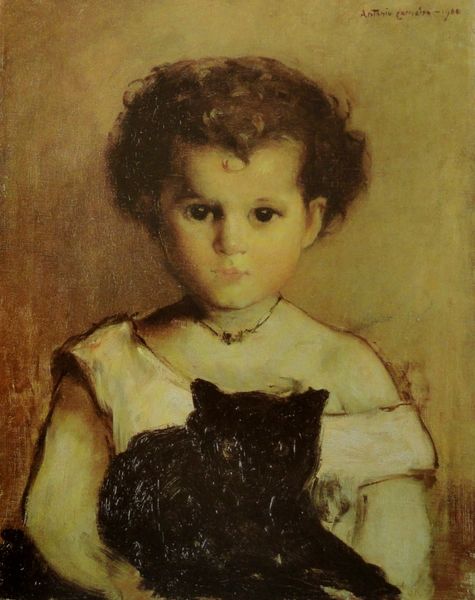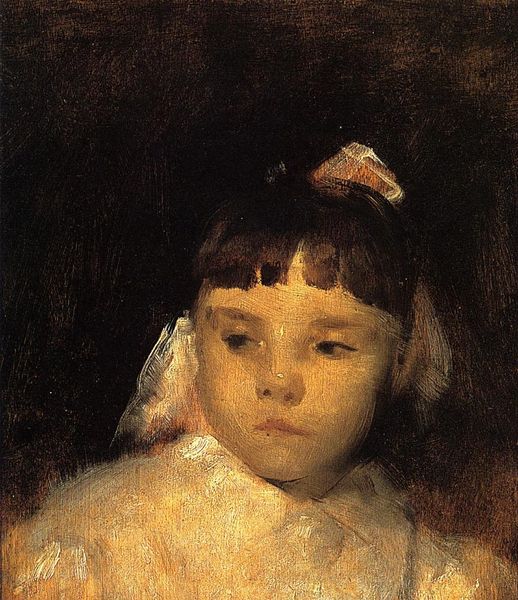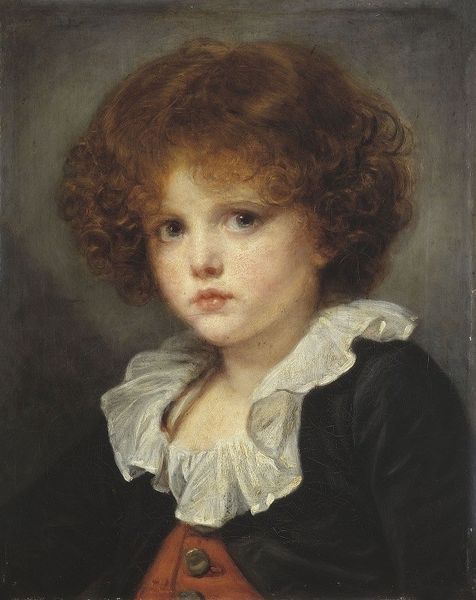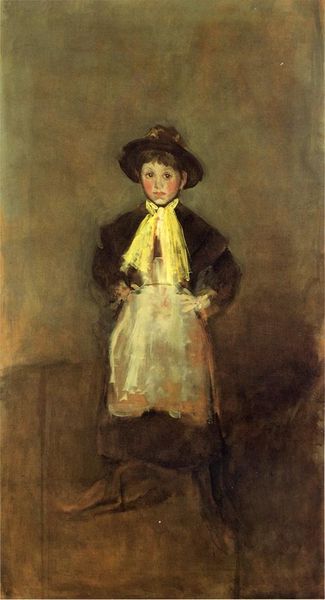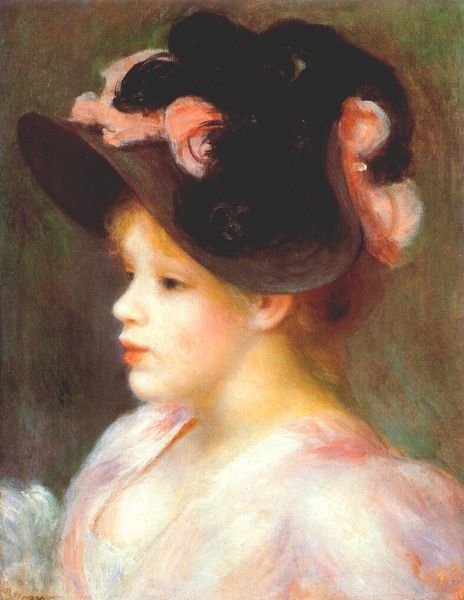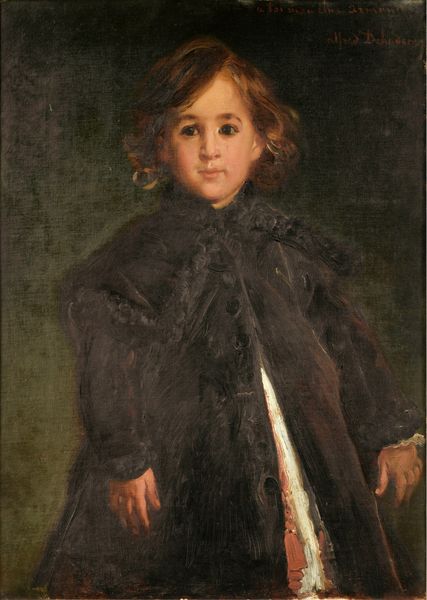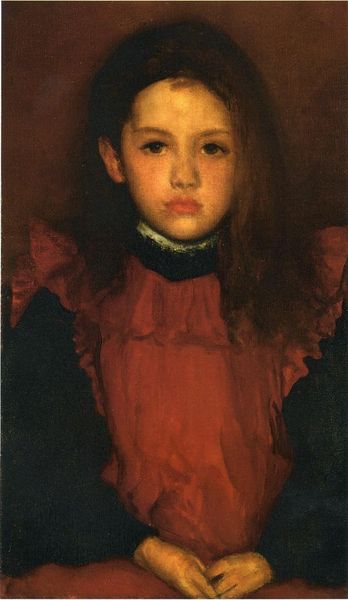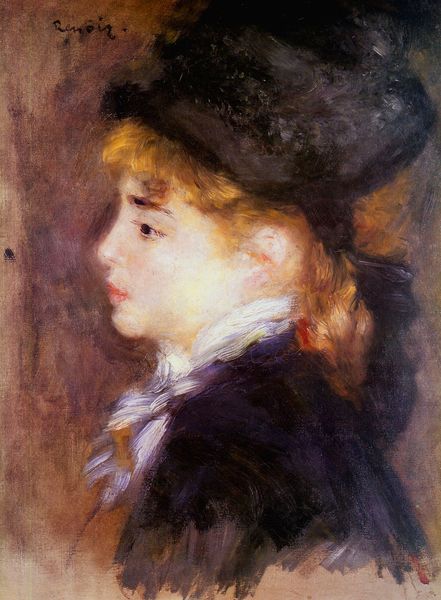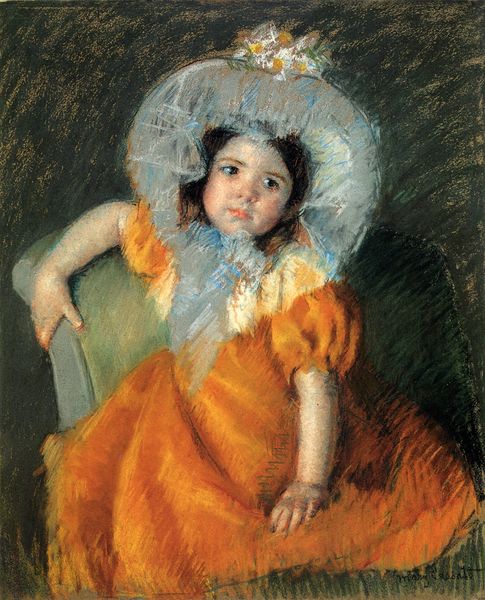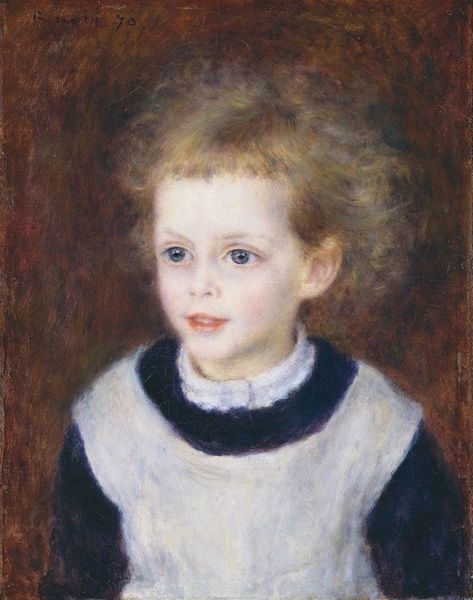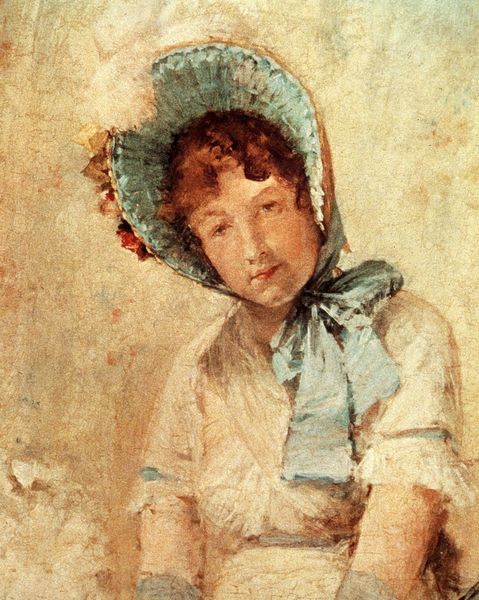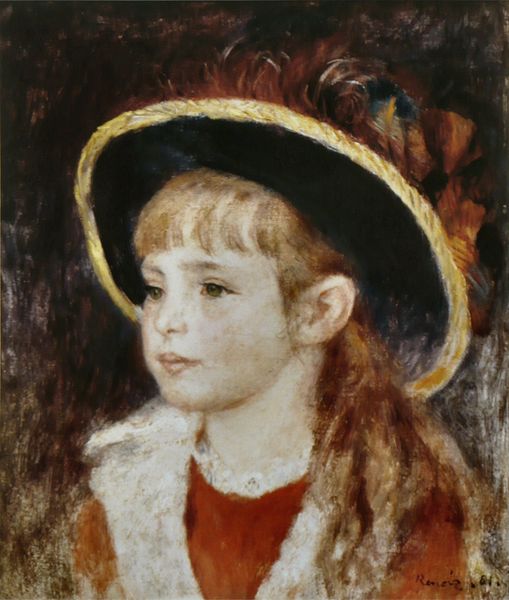
Dimensions: 50.8 x 38.1 cm
Copyright: Public domain
Curator: Looking at Whistler's "Arrangement in Grey: Portrait of Master Stephen Manuel" from 1885, I’m struck by the subdued palette. There’s almost a ghostly quality to the child's visage and attire. What’s your first impression? Editor: An immense head adornment atop this young boy. A very curious sense of almost theatrical melancholy. The child's expression, framed by that enormous hat, makes him seem wise beyond his years, like a character from a historical play. Curator: Precisely, I believe that the use of muted tones, particularly grey, invites us to contemplate the emotional landscape constructed from oil paint on canvas, it focuses on the textures and how that communicates meaning in relation to industrial progress, consumption, and materiality. The brushstrokes are soft, but precise, hinting at Whistler's almost obsessive focus on detail despite the "arrangement" aspect. Editor: Well, and consider the hat itself! Such headwear signifies wealth and status during this period, suggesting a complex message about the subject and how he wants the audience to perceive him. The dark clothing contrasts to the lightness around the face and hat to further suggest the symbol of status through his appearance. Curator: I wonder about the manufacturing processes used for both clothing and canvas, and the social strata involved in its making. Such considerations offer tangible meaning. Editor: Perhaps. I consider what it might mean for a child of this era to be portrayed so seriously. It hints at the pressures and expectations placed upon children even then, reminding us how society molds individual identities. The sombre, elegant shades suggest an effort at conveying maturity. Curator: And how the grey and its associated affect became synonymous with bourgeois dignity as labor patterns evolved. In our current cultural landscape, Whistler's commitment remains a powerful example of art that addresses production. Editor: Agreed, these muted tones highlight both the innocence and manufactured dignity during a pivotal moment in how childhood was viewed and represented in portraiture. It bridges centuries, a dialogue between artistry and identity. Curator: Whistler masterfully uses materiality to pose difficult cultural questions, a perfect example for us to ponder today. Editor: Indeed, a wonderful painting that transcends a singular reading.
Comments
No comments
Be the first to comment and join the conversation on the ultimate creative platform.
